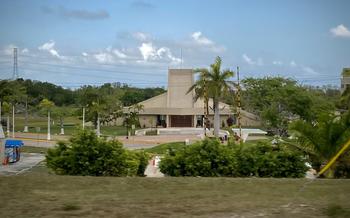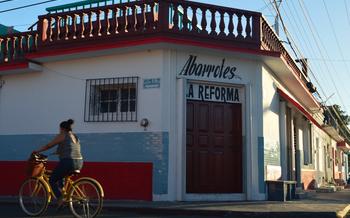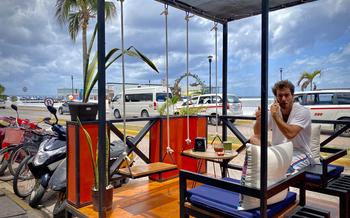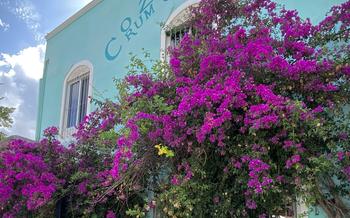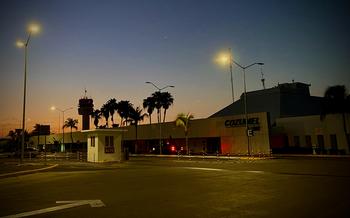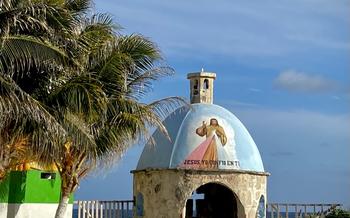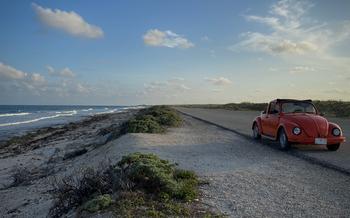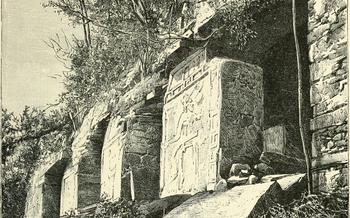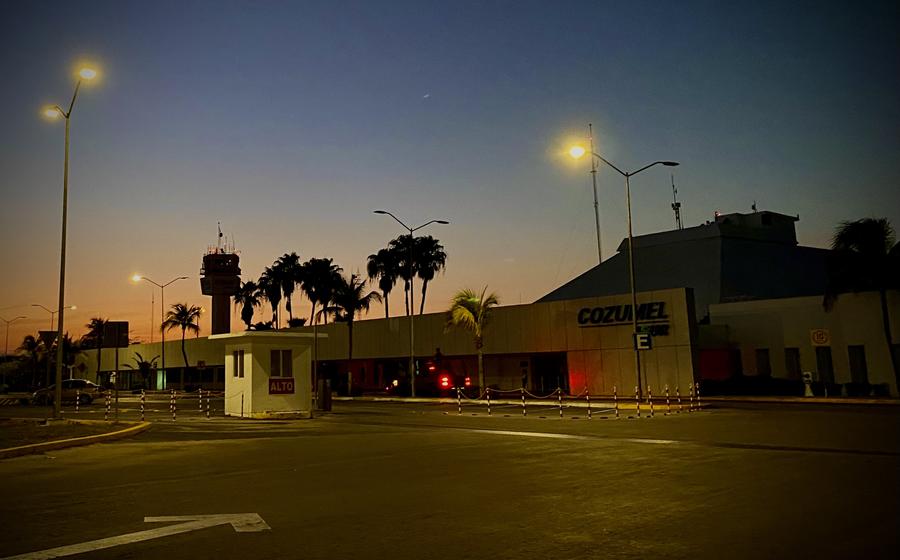
El Paso del Cedral Reef
- The El Paso del Cedral Reef: An Underwater Paradise
- Location and Accessibility
- Marine Life and Biodiversity
- Diving and Snorkeling
- Coral Formations and Reef Structure
- Visibility and Water Conditions
- Marine Conservation and Sustainability
- Guided Tours and Dive Operators
- Equipment Rental and Services
- Safety Precautions and Considerations
- Underwater Photography and Videography
- Cultural Significance and History
- Topside Attractions and Activities
- Accommodations and Where to Stay
The El Paso del Cedral Reef: An Underwater Paradise
The El Paso del Cedral Reef is a breathtaking underwater world located off the coast of Cozumel Island in Mexico. Considered one of the top diving spots globally, it boasts vibrant coral formations, teeming marine life, and crystal-clear waters. The reef's unique topography, characterized by dramatic underwater cliffs, canyons, and swim-throughs, creates a diverse habitat for a wide array of marine species.
My first dive at El Paso del Cedral Reef was an unforgettable experience. Descending into the water, I was immediately captivated by the stunning visibility, which allowed me to see for what seemed like miles. As I explored the reef, I encountered playful schools of colorful fish, graceful rays gliding effortlessly, and majestic sea turtles swimming with purpose. The vibrant colors and intricate patterns of the coral formations were a feast for the eyes, making me feel like I was in an underwater cathedral.
Location and Accessibility
The El Paso del Cedral Reef is situated off the western coast of Cozumel Island, nestled within the Mesoamerican Barrier Reef System, the second largest coral reef system in the world. To reach this underwater paradise, travelers can embark on a short boat trip from the island's main town, San Miguel de Cozumel. Local dive shops and tour operators offer guided excursions to the reef, providing a convenient and safe way to explore its depths. Alternatively, experienced divers can opt to rent their own equipment and access the reef independently from one of the many dive sites along the coast. Whether you choose to join a guided tour or venture out on your own, the El Paso del Cedral Reef is easily accessible and awaits eager divers and snorkelers with its mesmerizing underwater wonders.
Practical tips:
- Plan your trip during the dry season (November to May) for the best weather conditions and visibility.
- Book your tour or rental equipment in advance, especially during peak season, to avoid disappointment.
- Consider your level of experience and comfort when choosing a dive site or tour operator.
- Pack light and wear comfortable clothing for the boat ride to the reef.
Marine Life and Biodiversity
The El Paso del Cedral Reef is teeming with an extraordinary diversity of marine life, making it a hotspot for biodiversity in the Caribbean. From the tiniest nudibranchs to majestic manta rays, the reef offers an unparalleled opportunity to witness the wonders of the underwater world. The reef's healthy coral formations provide a habitat for a vast array of colorful reef fish, including angelfish, parrotfish, and damselfish. Divers and snorkelers can also encounter larger marine creatures, such as sea turtles, dolphins, and even the occasional shark.
One of the highlights of diving at the El Paso del Cedral Reef is the chance to spot endangered species. The reef is home to a population of critically endangered hawksbill turtles, which can be seen feeding and nesting in the area. Divers may also encounter the elusive spotted eagle ray, a graceful creature that glides effortlessly through the water. The reef's vibrant ecosystem is a testament to the importance of marine conservation, and visitors can play a crucial role in protecting this underwater paradise by adhering to sustainable tourism practices.
Personal anecdote:
During my first dive at the El Paso del Cedral Reef, I had an unforgettable encounter with a curious sea turtle. As I swam along the reef wall, I noticed a large dark shape approaching. To my amazement, it was a massive hawksbill turtle, its shell adorned with intricate patterns. The turtle swam alongside me for several minutes, seemingly unfazed by my presence. This encounter left me in awe of the beauty and fragility of the marine life that calls the reef home.
Diving and Snorkeling
Unforgettable Underwater Experiences at El Paso del Cedral Reef:
The El Paso del Cedral Reef offers a diverse range of dive and snorkel sites suitable for all levels of experience. For beginners, the shallow waters near the shore provide a calm and safe environment to explore the vibrant marine life. More experienced divers can venture further out to dive along the reef wall, where they'll encounter breathtaking drop-offs, tunnels, and swim-throughs.
Some of the must-see underwater attractions include the iconic El Cedral Wall, a sheer drop that plunges to depths of over 100 feet, and the Coral Garden, a kaleidoscope of colorful corals and tropical fish. The reef is also home to several shipwrecks, including the SS Mayaguez, a former U.S. Navy vessel that was sunk in 198
For snorkelers, the crystal-clear waters offer excellent visibility, allowing them to observe the reef's vibrant marine life from the surface. Snorkeling tours are available for those who prefer to explore the reef with a guide.
Practical tips for diving and snorkeling at the reef:
- Book your dive or snorkel tour in advance, especially during peak season, to secure your spot.
- Choose a reputable dive operator that adheres to safety standards and provides experienced guides.
- Follow the instructions of your dive guide and stay within the designated dive area.
- Be aware of your surroundings and maintain neutral buoyancy to avoid damaging the reef.
- Respect the marine life and refrain from touching or disturbing the corals or other organisms.
Coral Formations and Reef Structure
Types of Coral Formations
The El Paso del Cedral Reef boasts a diverse array of coral formations, each with its own unique shape and characteristics. Elkhorn coral, with its distinctive branching structure, creates dense thickets that provide shelter for a variety of marine life. Brain coral, with its massive, rounded colonies, forms intricate labyrinths that divers can explore. Fire coral, with its vibrant red or orange coloration, adds a splash of color to the underwater landscape.
Age and Formation of the Reef
The El Paso del Cedral Reef is estimated to be over 10,000 years old, a testament to the resilience and longevity of coral ecosystems. It was formed through the gradual accumulation of calcium carbonate deposited by living corals. Over time, these coral colonies grew and multiplied, creating the thriving reef structure we see today.
Threats to the Reef's Ecosystem
Like many coral reefs around the world, the El Paso del Cedral Reef faces various threats, including climate change, pollution, and overfishing. Rising sea temperatures due to global warming can cause coral bleaching, leading to the loss of symbiotic algae and ultimately the death of the coral. Pollution from land-based sources, such as sewage and agricultural runoff, can also harm the reef's delicate ecosystem. Overfishing can disrupt the food chain and reduce the number of herbivorous fish that help control algae growth on the reef.
Personal Anecdote: Witnessing the Beauty and Fragility of the Coral Reef
During my first dive at the El Paso del Cedral Reef, I was struck by the sheer abundance and diversity of coral formations. I swam through towering stands of elkhorn coral, marveled at the intricate patterns of brain coral, and admired the fiery hues of fire coral. However, I couldn't help but notice that some areas of the reef showed signs of bleaching and damage, a sobering reminder of the challenges facing these fragile ecosystems.
Visibility and Water Conditions
The El Paso del Cedral Reef boasts exceptional visibility, often exceeding 100 feet (30 meters). This clarity allows divers and snorkelers to enjoy unobstructed views of the vibrant coral formations and marine life. The best time to visit the reef for optimal visibility is during the dry season, which runs from November to May. During this period, the skies are typically clear, and the water is calm and tranquil.
The water temperature at the reef averages around 78 degrees Fahrenheit (26 degrees Celsius) throughout the year. This warm, tropical water provides a comfortable environment for divers and snorkelers, allowing them to spend extended periods underwater without feeling chilled. The currents at the reef are generally mild, making it an ideal destination for divers of all experience levels.
To ensure the best visibility and water conditions during your visit to the El Paso del Cedral Reef, consider the following tips:
- Plan your trip during the dry season (November to May) for the calmest seas and clearest waters.
- Choose a day with light winds and clear skies for optimal visibility.
- Avoid diving or snorkeling during or immediately after heavy rainfall, as runoff from the land can reduce visibility.
- Dive or snorkel early in the morning or late in the afternoon when the sun is low, as this can enhance the visibility of underwater features.
Marine Conservation and Sustainability
The El Paso del Cedral Reef is a precious ecosystem that faces various threats, including climate change, overfishing, and pollution. To protect this underwater paradise, several conservation efforts are underway. Marine parks and sanctuaries have been established to regulate fishing activities and limit human impact on the reef. Coral restoration projects aim to restore damaged coral colonies and promote reef growth.
As visitors, we can contribute to sustainable tourism practices by choosing tour operators committed to eco-friendly practices, minimizing our environmental impact during dives and snorkeling trips, and respecting the marine life. Adhering to the "look but don't touch" rule is crucial to avoid damaging the delicate coral formations.
Local communities play a vital role in reef conservation. Many indigenous groups have traditional knowledge and practices that promote sustainable fishing and reef protection. Supporting local conservation initiatives and engaging with community-based projects can contribute to preserving the reef's biodiversity and cultural heritage.
Personal anecdote: During my stay in Cozumel, I had the opportunity to participate in a reef conservation project. I joined a group of marine biologists and volunteers to help restore damaged coral colonies. We collected coral fragments from healthy colonies and attached them to specially designed structures to promote their growth and regeneration. It was an incredibly rewarding experience to be part of an effort to protect and preserve this magnificent underwater world for future generations.
Guided Tours and Dive Operators
Booking a guided tour or using a dive operator offers several advantages for exploring the El Paso del Cedral Reef. Experienced guides can lead you to the best dive sites, ensuring you don't miss any hidden gems. They also provide valuable information about the reef's marine life and ecosystem, enhancing your diving experience.
When selecting a dive operator, look for reputable and experienced companies with a good safety record. Check their certifications and read reviews from previous customers to gauge their professionalism and customer service.
Guided tours typically include transportation to and from your hotel, dive equipment rental, and the services of a certified divemaster or instructor. Prices vary depending on the tour duration, the number of dives, and the level of experience required.
Choose the best tour option based on your experience and preferences. If you're a beginner, consider a guided tour specifically designed for novices. Experienced divers may prefer a more customized tour that allows them to explore the reef at their own pace.
Equipment Rental and Services
Diving and snorkeling enthusiasts visiting the El Paso del Cedral Reef require specialized equipment to fully enjoy and explore the underwater world. Fortunately, Cozumel Island offers a wide range of rental and purchase options for divers and snorkelers of all levels.
Numerous dive shops and rental centers are located throughout the island, providing a variety of equipment, including scuba tanks, regulators, buoyancy compensators, wetsuits, masks, fins, and snorkels. Rental costs vary depending on the type of equipment, the duration of the rental, and the season. It's advisable to book your equipment in advance, especially during peak season, to avoid disappointment.
When selecting rental gear, it's essential to choose reputable and well-maintained equipment. Inspect the equipment carefully before use, ensuring it fits properly and is in good working condition. If you have your own equipment, remember to pack it carefully and transport it safely to Cozumel. Make sure to rinse and dry your equipment thoroughly after each use to prevent corrosion and extend its lifespan.
Safety Precautions and Considerations
Diving and snorkeling at the El Paso del Cedral Reef are generally safe activities, but certain risks and hazards should be considered to ensure a safe and enjoyable experience.
- Be aware of the potential for strong currents and surge, especially during certain times of the year and weather conditions.
Underwater Photography and Videography
Capturing the beauty of the El Paso del Cedral Reef through underwater photography and videography is an unforgettable experience. Whether you're an amateur enthusiast or a professional photographer, the reef offers a wealth of opportunities to create stunning images and videos.
To capture the best shots, it's essential to have the right equipment. A waterproof camera or housing is a must, and consider investing in a wide-angle lens to capture the vastness of the reef and its marine life. An underwater strobe or video light will help illuminate your subjects and enhance the colors.
Remember, respecting the reef and its inhabitants is paramount. Avoid touching or disturbing marine life, and be mindful of your fins to prevent damaging the delicate coral formations. Patience is key; take your time to observe and find the perfect moment for your shot.
One unforgettable moment I captured was a breathtaking encounter with a sea turtle. As I slowly approached, it swam gracefully towards me, allowing me to capture its beauty up close. The vibrant colors of the reef and the turtle's majestic presence created a truly magical moment.
Cultural Significance and History
Beyond its natural beauty and biodiversity, the El Paso del Cedral Reef holds cultural and historical significance for local communities and indigenous cultures. The Maya civilization, which flourished in the region centuries ago, revered the reef as a sacred place and believed it possessed spiritual powers. They often conducted ceremonies and rituals on the shores of the reef, seeking guidance and protection from the spirits of the sea.
Local fishing communities have depended on the reef for sustenance for generations. They have developed traditional fishing techniques that respect the delicate ecosystem and ensure the sustainable use of marine resources. Fishermen often pass down their knowledge and skills from father to son, preserving a deep connection to the reef and its bounty.
The reef has also been the backdrop for historical events and legends. Pirates and buccaneers once roamed these waters, seeking shelter and hiding their treasures among the coral formations. Stories of sunken ships and buried gold still circulate among the locals, adding an aura of mystery and adventure to the reef's allure.
My personal anecdote about learning about the cultural significance of the reef came during a conversation with a local fisherman. He shared stories of his ancestors' rituals and beliefs, explaining how the reef was considered a living entity, deserving of respect and gratitude. His words gave me a deeper appreciation for the reef, not just as a natural wonder but as a symbol of cultural heritage and continuity.
Topside Attractions and Activities
In addition to its world-renowned diving and snorkeling, Cozumel Island offers a plethora of topside attractions and activities to complement your vacation experience. For history buffs, the San Gervasio Mayan ruins are a must-see, providing a glimpse into the ancient civilization that once inhabited the island. Take a stroll along the waterfront promenade in San Miguel de Cozumel, the island's main town, and soak up the lively atmosphere. Indulge in some retail therapy at the many shops and boutiques, where you can find everything from souvenirs to high-end jewelry.
For nature enthusiasts, the Punta Sur Eco Beach Park offers a chance to explore the island's diverse ecosystems, including mangroves, lagoons, and beaches. Embark on a thrilling ATV or Jeep tour through the jungle, where you can encounter exotic wildlife and admire the island's rugged beauty. And don't miss the opportunity to swim with dolphins or take a boat trip to snorkel with sea turtles, an unforgettable experience that will create lasting memories.
Accommodations and Where to Stay
Cozumel Island offers a wide range of accommodation options to suit different budgets and preferences. For those seeking a luxurious and pampering experience, there are several upscale resorts and hotels located along the beachfront, offering stunning ocean views, private balconies, and a variety of amenities such as spas, pools, and gourmet restaurants.
For travelers on a tighter budget, there are numerous guesthouses, hostels, and budget-friendly hotels that provide comfortable and affordable accommodations. These options are often located in the town of San Miguel de Cozumel, which is the main town on the island and offers a vibrant atmosphere with plenty of shops, restaurants, and bars to choose from.
To ensure easy access to the El Paso del Cedral Reef and other top dive sites, it's recommended to stay in the northern part of the island, closer to the dive shops and boat launch areas. This way, you can minimize travel time and maximize your diving opportunities.
When booking your accommodation, consider factors such as location, amenities, budget, and availability. It's advisable to book in advance, especially during peak season, to secure the best rates and availability. Online booking platforms, travel agents, or directly contacting the accommodation provider can help you find the perfect place to stay for your Cozumel adventure.
